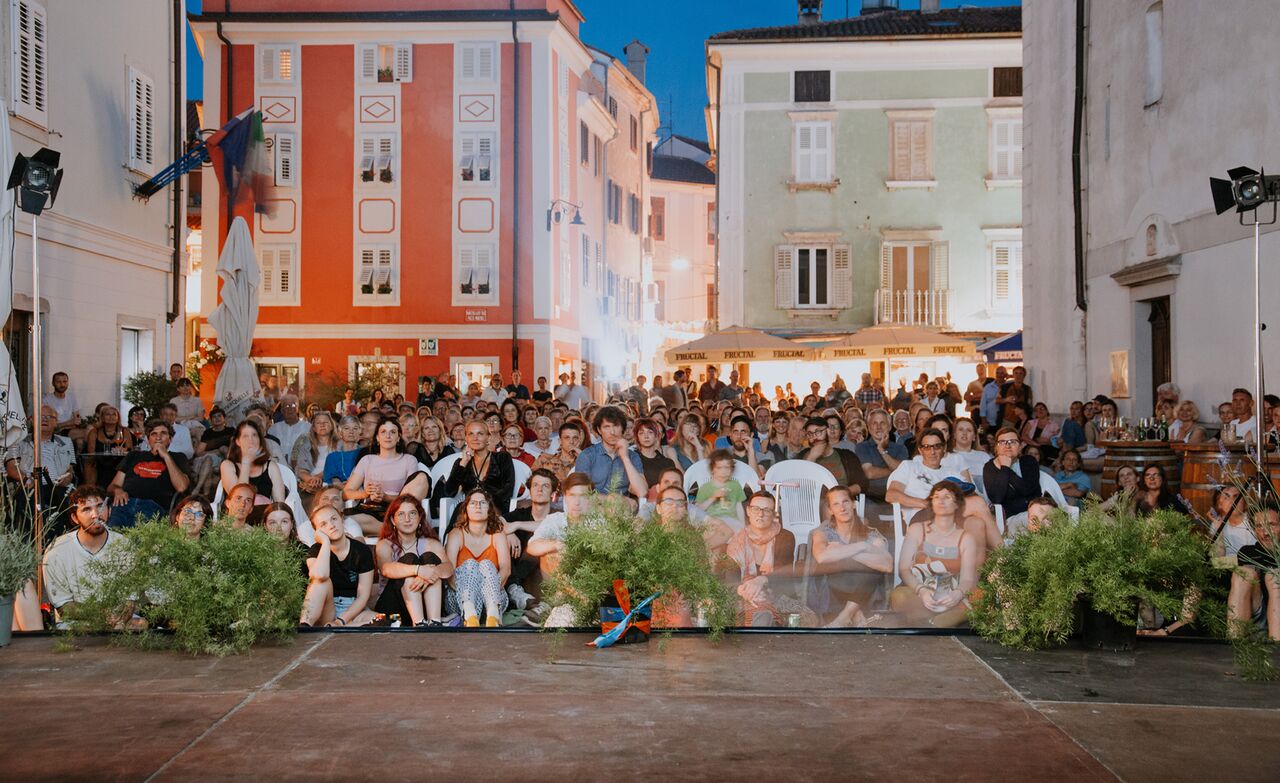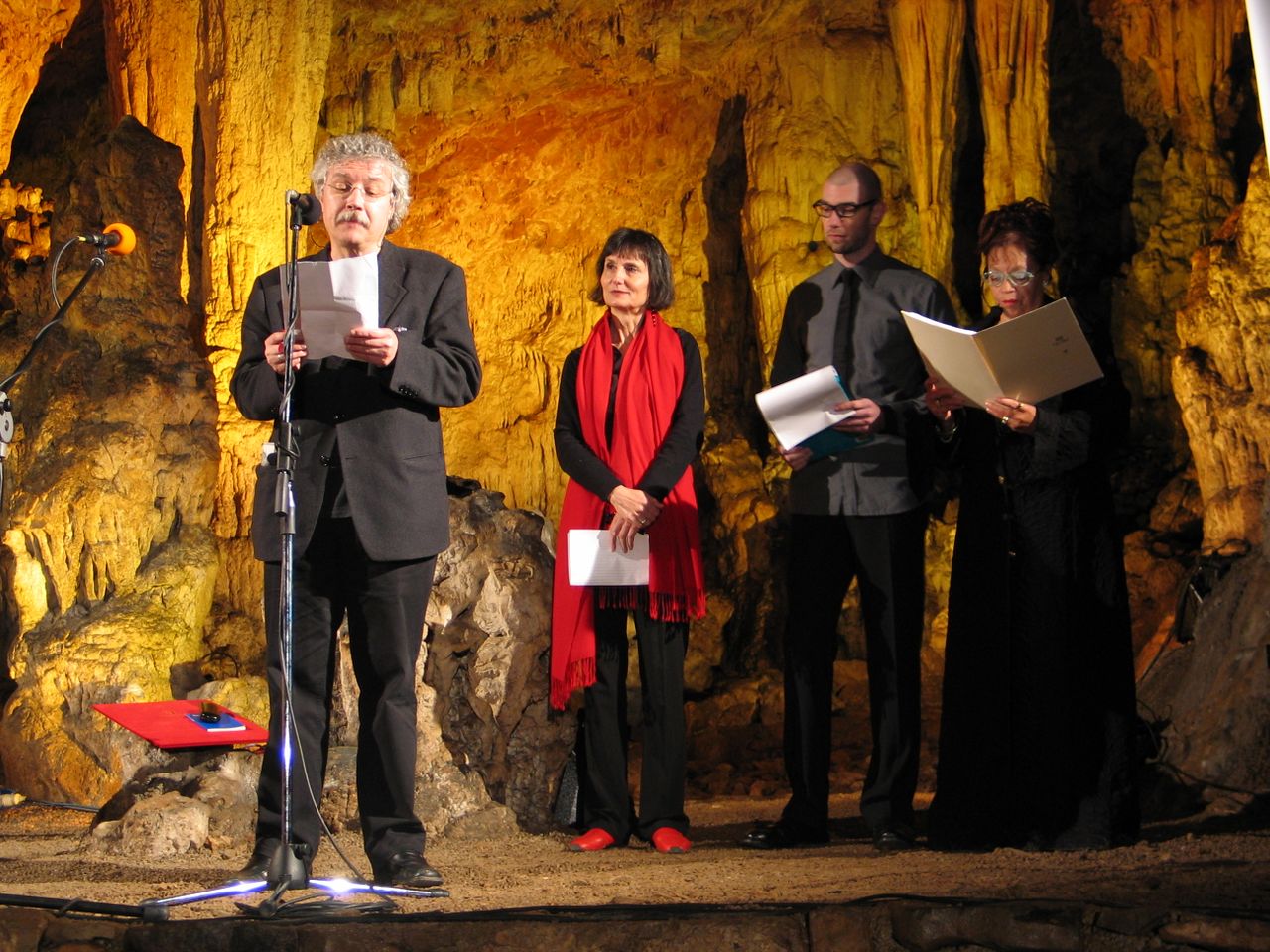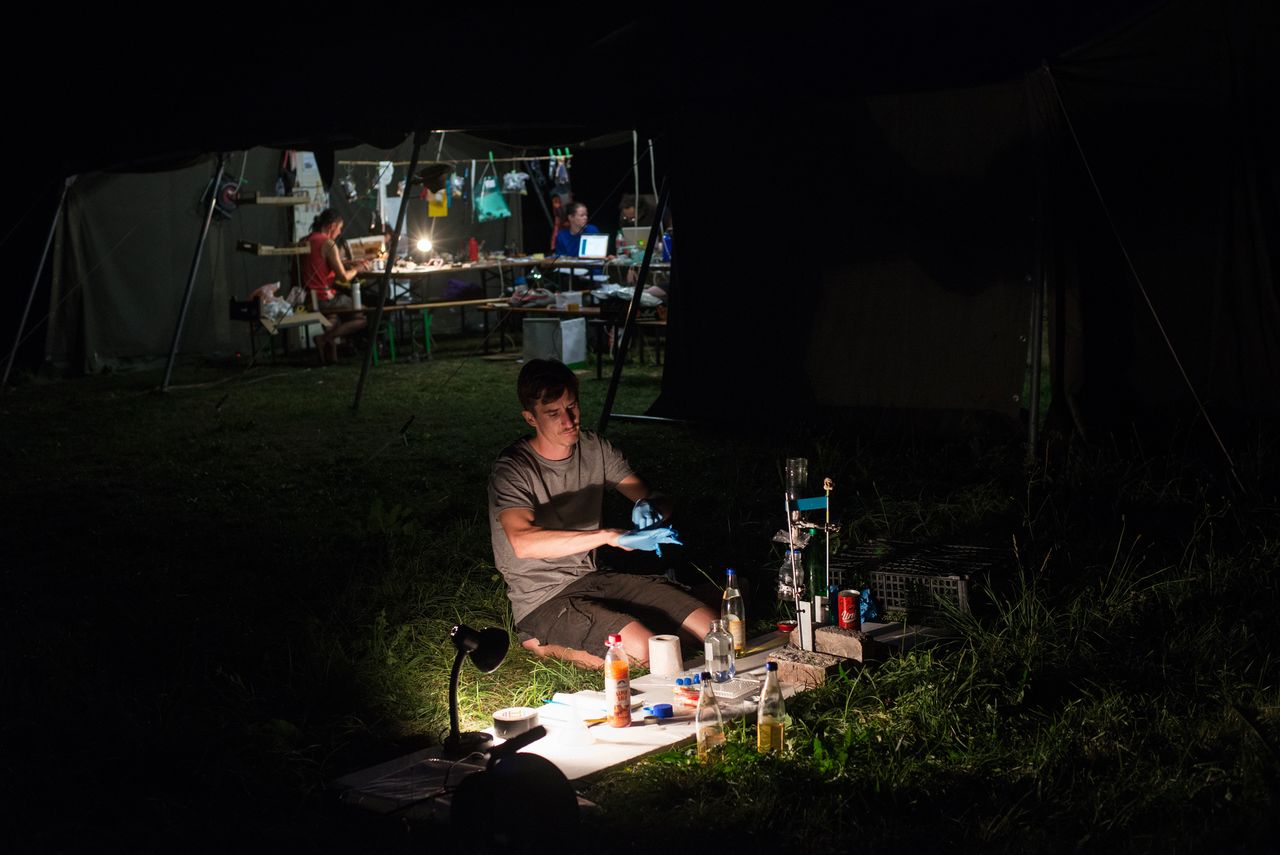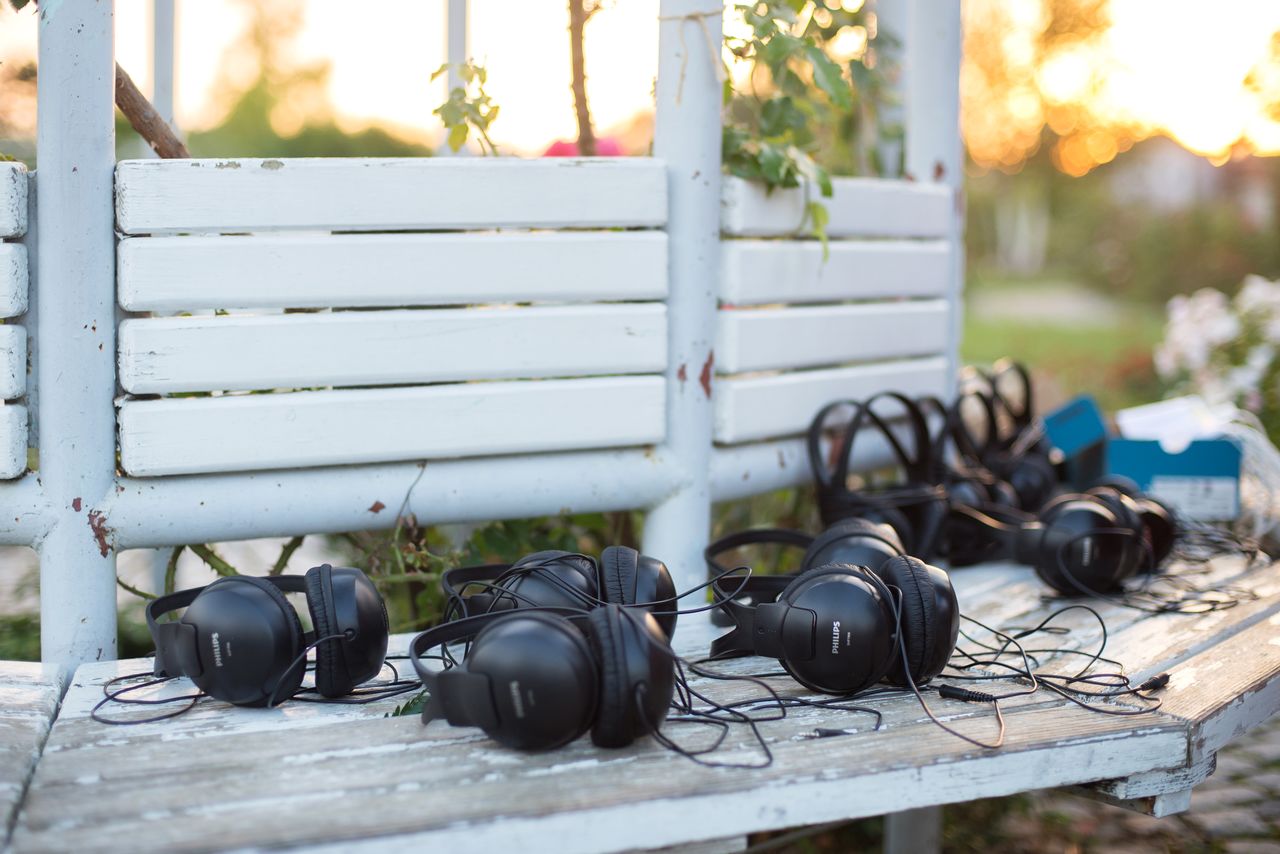Greening Practices in Culture: Slovenian Organisations in Action
Green Festivals
Did you know that about 190 festivals take place in Slovenia every year? The entire scope of multiday events from different fields of arts can be seen on the infographic, Festivals in Slovenia. Since the interactive calendar provides a view by year, month, week, as well as artistic discipline, you can quickly find the festival that best fits your field of work – or pique your curiosity. Many Slovenian organisations endeavour to carry out their international festivals and other multiday events in line with green guidelines, including encouraging green mobility of guest artists and the public. Let’s take a look at several lively festivals!
Contemporary Performing Arts with a Green Focus
At the end of every August, the area around the Stara Elektrarna - Old Power Station comes alive with the fresh, energetic and homey pulse of the international Mladi levi Festival. Organised since 1998 by Bunker Institute, the programme includes diverse and progressive contemporary performing arts creators, with a special emphasis on young artists.

This year, four behind-the-scenes projects helped the Bunker team steer the festival’s production and organisation on a green(er) course. Among them were two Creative Europe-funded projects: Greenstage, which aims to create a zero-waste festival, and Festival SPA (Slow Performing Arts Festivals for improved wellbeing, mental health and social inclusion), which encourages wellbeing for festival workers and audiences by offering works of art that deal with temporality and by designing festival centres as spas. With the project Less is More, supported by the Ministry of Culture of the Republic of Slovenia, Bunker is introducing pilot practices of de-growth into the sector, and it is also participating in Motovila’s project Green Skills Accelerator in Culture.
First Slovenian Film Festival Towards Zero Waste
For already over two decades, the Kino Otok - Isola Cinema Festival has been taking place with its central event in Izola and film screenings expanding to art cinemas in Ljubljana and other locations throughout Slovenia. At the beginning of June, one can view around 130 auteur films of all lengths from around the world, Europe and Slovenia. The films stand on equal footing, since the festival did away with its competition programme and awards over a decade ago. Alongside the curated film programmes for different generations, the festival offers an expert programme for film professionals and connects with galleries and musicians.
Regarding Otok Cultural Institute’s sustainability efforts, it’s not surprising that Kino Otok is the first Slovenian film festival to commit to zero waste in 2022. With this commitment, it aims to minimise waste and recycle any waste it creates. The festival became certified as a two-star Zero Waste Event by Ecologists Without Borders, the Slovenian national organisation of the Zero Waste Europe network. To put it into perspective, each visitor to last year’s festival created an average of 50 grams of waste. In contrast, the world average at events usually exceeds 1 kilogram of waste per person per day.

Green Steps of Slovenian Literary Festivals
Two literary festivals have also set out on the path to zero waste: Slovene Book Days in Maribor and Pika's Festival. Since 1997, the MKC Maribor Youth Culture Centre has been coordinating the programme of Slovene Book Days in Maribor, which enlivens the city with a week of literary events, and is produced in cooperation with more than thirty local, regional and national libraries, bookshops, publishers, schools and organisations. In the framework of the project Green Step for Culture, MKC Maribor has also developed a calculator for public cultural institutions that manage their own buildings.
From the perspective of sustainability, Slovenia’s largest children’s festival, Pika's Festival – organised by the Festival Velenje Public Institute – is distinctive because of its target audience. With the project I Paint the World Green, important changes were already introduced in 2024, and this year’s festival also integrates green practices (sustainable stage design, creating with recycled materials, green transportation, recycling stations, etc.), all while raising awareness and encouraging such practices among the youngest audiences, as well as their parents, teachers and other visitors.

September also brings a festival with a more international reach. The Vilenica International Literary Festival, a meeting of poets, writers, dramatists and essayists from Central Europe, is organised in the Vilenica karst cave and elsewhere throughout Slovenia by the Slovene Writers’ Association. Celebrating its 40th anniversary in 2025, it has also embarked on the path to sustainability. Alongside the jury-selected Vilenica International Literary Award bestowed to an author from Central Europe for outstanding achievements in the field of literary creation and essay writing, the festival programme includes literary readings, evening talks with authors and roundtables on pressing social topics.

Sustainable Experimentation in the Soča Valley
What about sustainability in contemporary art linked to new media and technology? Each year, around 60 creators from all over the world gather in the Soča Valley – in the heart of nature – at the art-and-technology or hacker camp known as PIFcamp. Guided by principles of communal creation, innovative uses of new technologies and the open exchange of ideas and knowledge, participants develop projects in biohacking, computer arts, wearable technology, e-textiles, AV practices, modular and vector synthesis and more.

PIFcamp was born ten years ago within the European project Changing Weathers, led by Projekt Atol Institute with partner Ljudmila Art and Science Laboratory. The camp is currently carried out within the Rewilding Cultures project, also supported by the Creative Europe programme. To encourage participants to choose green transportation, Projekt Atol Institute combined forces with Ecologists Without Borders to develop a carbon footprint calculator for the arrivals at PIFcamp and other related events. The engineer and visual-sound artist Bernhard Rasinger, who created an off-grid solar system for the camp, began tracking the camp’s electrical usage and needs in 2024. On this year’s edition, he led an introductory workshop about energy awareness and solar energy.
Sonic Ecologies and Festival of Sound Walking
In programming and organising their festivals, many organisations pay special attention to waste reduction, the efficient use of energy and other resources, and green mobility. They also seek to raise awareness among their guests, audiences and collaborators. However, some are mindful of other types of environmental impacts, for example, noise pollution.
With its project Sejalke, Cona Institute brings ecological awareness to the forefront within its festival of radical sound walking, TO)pot. The project explores how festivals such as TO)pot can present art as a means of understanding environmental challenges and promoting sustainable practices. Within the theoretical strand of its 2025 festival, Cona, together with the Science and Research Centre of Koper, has co-organised a symposium of the Central-European Network for Sonic Ecologies (CENSE), underscoring the importance of acoustic ecology and walking.

Other Green Projects
Creative Europe Projects Driving Change
We have showcased several sustainability-driven initiatives by Slovenian organisations, which are closely tied to their festivals and other events and are mutually enriching. There are countless similar efforts, and if you are seeking opportunities to collaborate with Slovenian artists or cultural organisations, you will have no trouble finding green projects.
Several have received support from the EU’s Creative Europe programme. For example, Transport: Sustainable puppet co-creations for European young audiences, led by Ljubljana Puppet Theatre in partnership with Maribor Puppet Theatre and international partners. Likewise, MoTA Museum of Transitory Art is a partner in the innovative project Transition to 8: European societies in flux (TT8), which uses participatory cultural activities to raise awareness about the effects of air pollution and its broader social dimensions.
In the field of music, Sploh Institute is participating as a partner in the project Better Live, which envisions an inclusive and green transition – including a model for more sustainable touring by musicians – and the further development of the live music sector. In the area of film and audiovisual activities, the Slovene Animated Film Association (DSAF) addressed green animation at its CEE Animation Conference GO!2025 (supported by the Creative Europe MEDIA programme).
National Support: Green Transition in Culture
Alongside the Creative Europe programme, important support also comes from the Ministry of Culture of the Republic of Slovenia, which, through its Public Call for the Green Transition in Culture, has funded the adoption of sustainable practices, stimulated innovative green approaches and encouraged cultural organisations to reduce the carbon footprint of their activities and events.
Marking the first such call for greening in culture, among the supported projects are several already mentioned above, including the Green Skills Accelerator in Culture. Led by Motovila Institute, in collaboration with Umanotera, the project aims to develop tools for planning environmentally sustainable practices – among them, a carbon footprint calculator tailored to the cultural sector – and is designing sustainable strategies and action plans for cultural organisations that will incorporate concrete measures to reduce CO2 emissions.
With its project EkoKreatura, KID PiNA is developing a handbook for the sustainable use of resources. Through the project Platform of Used Materials, the Museum of Architecture and Design is focusing on the reuse of exhibition elements and other temporary constructions. Worth highlighting is Trajna Collective’s Krater Model, where creative practices have sprouted in Ljubljana from a construction pit resembling a crater. Here, this temporary production space fostered the development of new practices – a unique reversal, since usually a programme is devised first and then the space for carrying it out is determined.
Explore More on Slovenia’s Green Cultural Scene
Are you interested in learning more about Slovenia’s green cultural scene? On Culture.si, you can also read the article, in which we highlight some of the more sustainability-oriented artist-in-residency programmes, such as those at the International Centre of Graphic Arts’ Švicarija Art Centre, Krušče Creative Center and Mekinje Monastery. Stay tuned to Culture.si for more on AiR programmes!
Author bio
Nika Mušič has a background in comparative literature and many years of experience in publishing, where she worked as an editor in the field of contemporary and children’s literature, as well as a proofreader and literary critic. Since 2024, she has been employed at Motovila (CED Slovenia), fostering cooperation in the cultural and creative sectors.
The text was written in August 2025 in the framework of the public procurement "Development and upgrade of information portals of the Ministry of Culture for the transition to the eKultura platform" in which Motovila Institute collaborates as a partner with Ljudmila Art and Science Laboratory.
See also
- Greening Practices in Culture: Artist-in-Residence (AiR) Programmes in Slovenia
- Paving the Way for Green Animation and a Co-Development Mechanism
- Festivals in Slovenia
- Motovila Institute
External links
Organisations and networks
- Ecologists Without Borders website
- Central-European Network for Sonic Ecologies website
- CEE Animation portal
- Umanotera website
- Trajna website